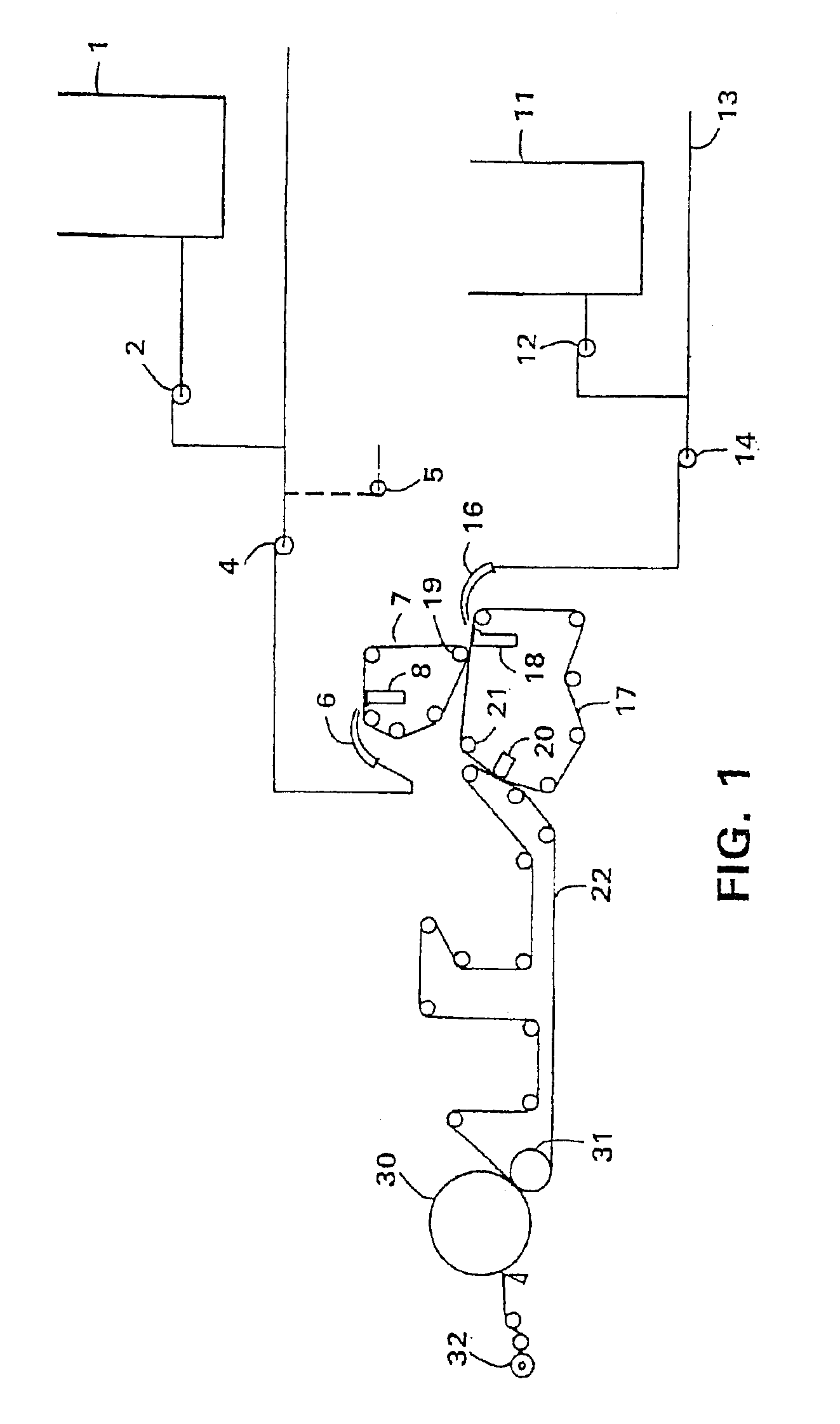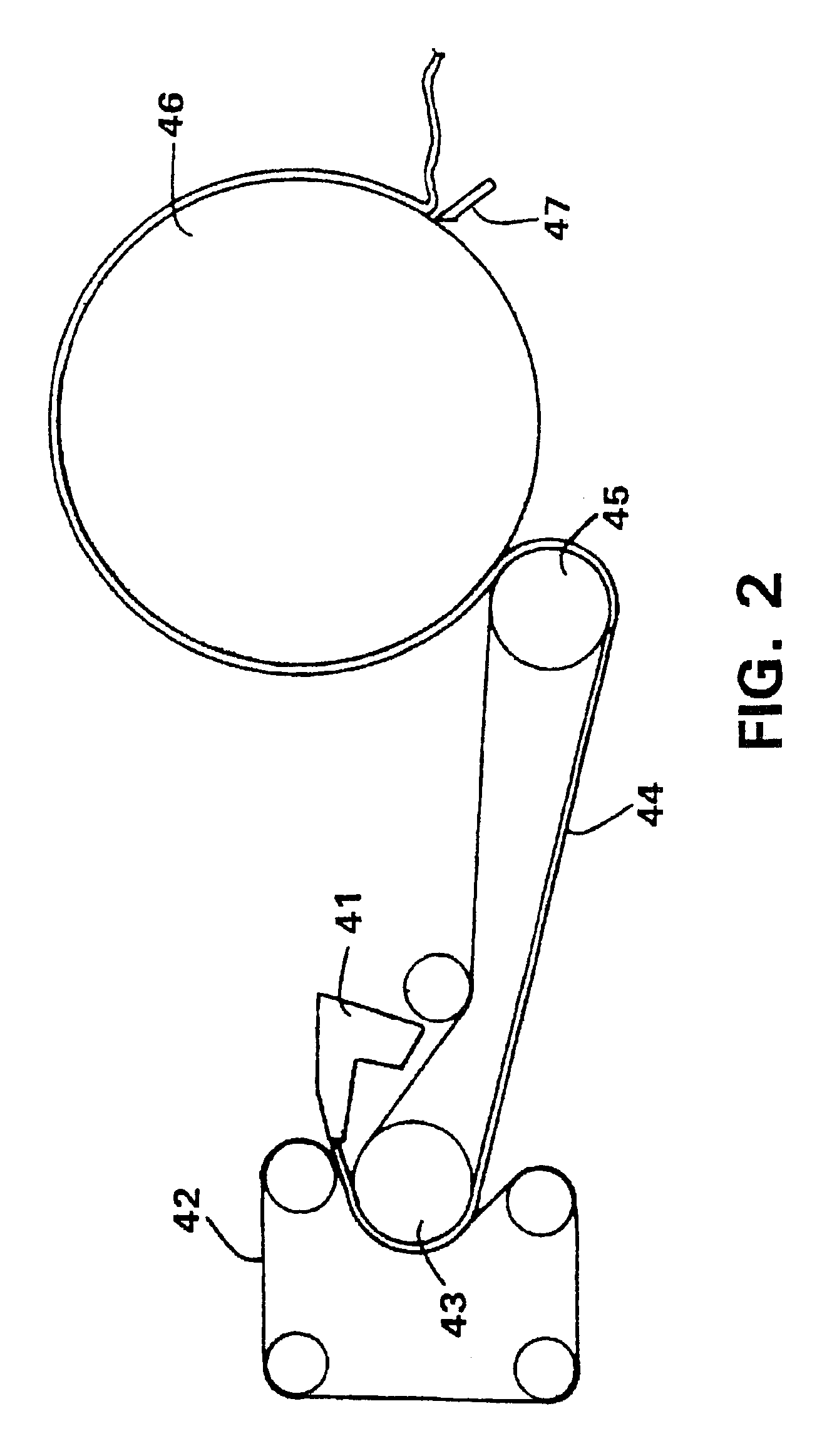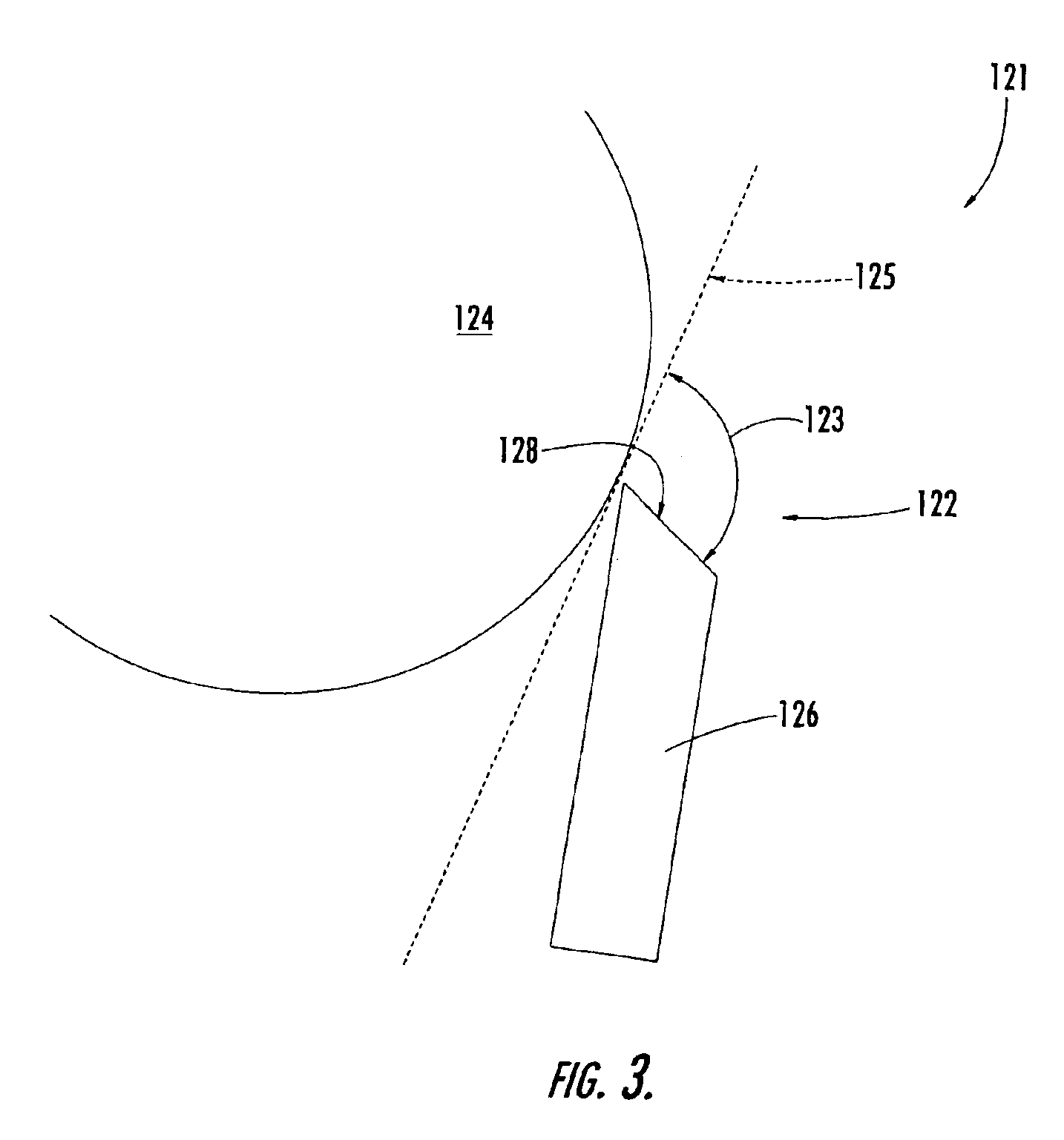Method and system for manufacturing tissue products, and products produced thereby
a tissue product and manufacturing method technology, applied in the field of tissue product manufacturing methods and systems, can solve the problems of reducing dryer adhesion, affecting the softness of the tissue product, and affecting the softness of so as to improve the softness of the tissue product and soften the surface of the tissue exposed
- Summary
- Abstract
- Description
- Claims
- Application Information
AI Technical Summary
Benefits of technology
Problems solved by technology
Method used
Image
Examples
example 1
Control Sample Unrefined Fibers
Creping Pocket Angle of 82 Degrees
[0052]A soft tissue product to be used as control was made using a creping pocket angle of about 82 degrees, using unrefined fibers, as further described below. A layered headbox was employed. The first stock layer contained eucalyptus hardwood fiber, which made up about 65% of the sheet by weight. This layer is the first layer to contact the forming fabric. Because it is transferred to a carrier felt, the hardwood layer also is the layer that contacts the drying surface. The second stock layer contained northern softwood fiber (designated LL-19). It comprised about 35% of the sheet by weight.
[0053]Permanent wet strength agent (Kymene, available from Hercules, Inc) was added in an amount equivalent to about 4 lbs / ton (about 0.2%) to the eucalyptus fiber and LL-19. The LL-19 fiber was not subjected to refining. A dry strength agent (Parez from Cytec) was added to the softwood side stock pump to adjust tensile strength. ...
example 2
Refined Fibers
Creping Pocket Angle of 82 Degrees
[0054]A tissue sample was prepared as in Example 1, except that the LL-19 fiber fraction was subjected to refining with about 1.5 horsepower-day per ton of dry fiber (HPD / T) energy input.
example 3
Refined Fibers
Creping Pocket Angle of 82 Degrees
[0055]A tissue sample was prepared as in Example 1, except that the LL-19 was subjected to refining with about 3.0 HPD / T energy input.
PUM
| Property | Measurement | Unit |
|---|---|---|
| creping pocket angle | aaaaa | aaaaa |
| creping pocket angle | aaaaa | aaaaa |
| creping pocket angle | aaaaa | aaaaa |
Abstract
Description
Claims
Application Information
 Login to View More
Login to View More - R&D
- Intellectual Property
- Life Sciences
- Materials
- Tech Scout
- Unparalleled Data Quality
- Higher Quality Content
- 60% Fewer Hallucinations
Browse by: Latest US Patents, China's latest patents, Technical Efficacy Thesaurus, Application Domain, Technology Topic, Popular Technical Reports.
© 2025 PatSnap. All rights reserved.Legal|Privacy policy|Modern Slavery Act Transparency Statement|Sitemap|About US| Contact US: help@patsnap.com



